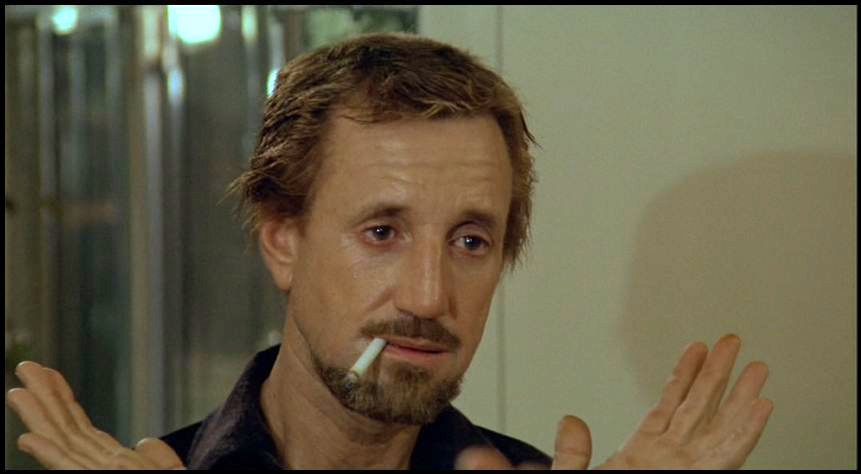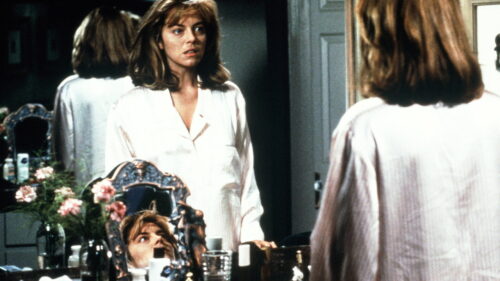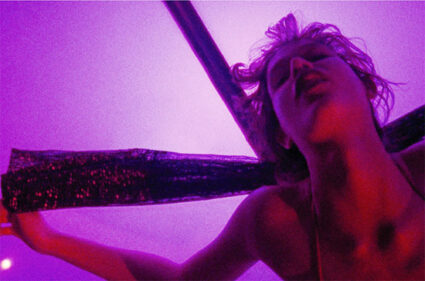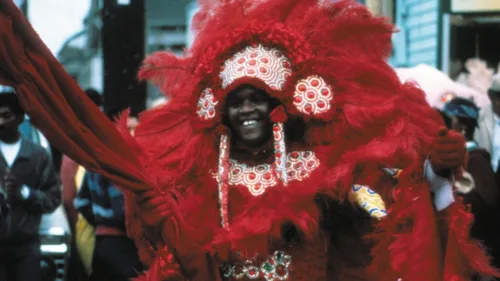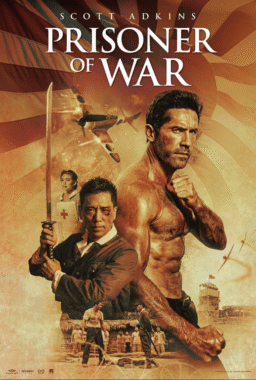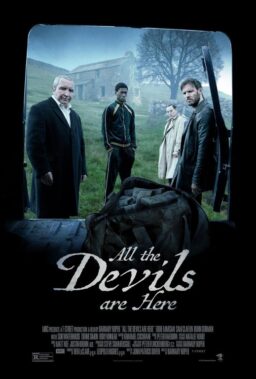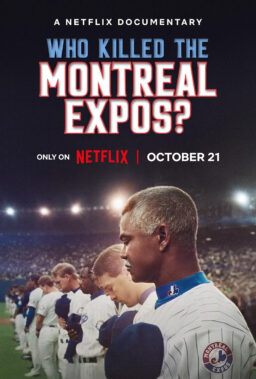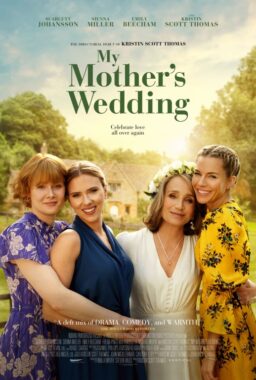I am honored to have been asked to contribute a video essay to Criterion about the editing of Bob Fosse‘s masterpiece “All That Jazz.” Motion picture editing and its storytelling uses have always fascinated me. Fosse’s 1979 showbiz drama is an especially rich source for discussion because it jumps between past and present and memory and fantasy, and in so doing, collects the history of narrative film editing in one feature. It’s one of my very favorite movies, period. I’ve written about for many different venues over the years, including The New York Times (in a reported piece that served as partial inspiration for the video essay) and Salon (where it appeared on my list of “desert island movies“). I’ve reprinted the voice-over script below, minus the listing of clips and time codes that were in there originally.
I should tell a tale out of school now, to satisfy the curiosity of people who saw an announcement some time ago saying this video essay would be on the blu-ray disc itself and wondered why, all of a sudden, it wasn’t.

The reason has to do with rights clearances. I was told going into writing/editing that the piece would be assembled according to principles of Fair Use. This approach holds that you do not have to ask permission of copyright holders to use intellectual property for purposes of education, criticism, journalism, satire or parody, as long as the use is judicious and reasonable, and doesn’t deploy the material for any other purpose except to augment the point you’re trying to make.
Criterion wanted to be extra careful about that last part on the “All that Jazz” disc, even though in theory they were working by Fair Use principles. The last time I did a video essay for them—back in 2010, for the Blu-ray of “The Darjeeling Limited“—they nixed my idea to do a Fair Use-style essay incorporating a lot of different clips, a la my Wes Anderson series “The Substance of Style,” because they preferred to officially clear each and every clip; this was, they believed, the only way to guard against getting pressed by lawyers into having to recall discs and re-edit or delete the supplement.
A lot of filmmakers and distributors have that concern: that even if you’re legally in the right regarding Fair Use-appropriated clips, intellectual property rights-holders might still come after you, and try to bully you into removing clips rather than spend money defending your legal right to use them. That’s a hill pretty much nobody wants to die on.
That skittishness explains why—as regular viewers of my video essays might notice—there are not too many montages in this essay comprised of of non-annotated clips set to music, or moments where you just look at a clip for a long time, without me chiming in to put it in some kind of context, both of which tend to be characteristic of my stuff. That’s because Criterion asked me and Issa to err on the side of explicitness in the voice-over, in case intellectual property holders tried to make a case that we were holding shots for “too long,” or using them for purposes of entertainment rather than analysis.
Mind you, I don’t think anybody there was hugely concerned that this would happen, but they were concerned about the possibility that it might. So they wanted me to write the narration and arrange the clips with Issa in ways that might guard against such a thing happening, or reassure them that we were looking out for them and trying to assuage their worries, and allow them to tell anyone who complained, “See? Matt says right there in the narration why he’s using that clip.”
In the end, unfortunately, the video essay was cut from the disc anyway! The rationale, as I understand it, was that even though the chance of a legal challenge was remote, if one did happen, and if Criterion either went to court and lost or decided to fold before it came to that, they’d have to physically recall all the discs and reprint them with a reedited version of my piece (or without the piece). And that would be very expensive.
So in the end it was decided that “Fosse Time” would run online-only, as a virtual supplement to the physical disc.
The essay you see embedded on this page is exactly what would have appeared on the disc—it’s just on YouTube. I actually don’t mind this as much as I feared I would; it means more people will see it.
And now: It’s showtime, folks!
“Fosse Time”
VOICE-OVER SCRIPT
By Matt Zoller Seitz
There’s past.
There’s present. There’s future. And then there’s a different kind of time. One
described by editor Alan Heim, who edited choreographer and director Bob
Fosse’s last three movies. A continuously unfolding present tense moment. Fosse
time.
All that Jazz
begins with what seems like a standard character-establishing montage. The hero
Joe Gideon’s morning routine. Eye
drops. Antacid. A section of Vivaldi’s four seasons played on a tape deck – a
bit of music we’ll hear many times during the film. A shower and a
cigarette. Uppers. To get through
the day.
We’re in the present.
Yes?
No. Not exactly .
Are we in Joe
Gideon’s head? Is this entire film an extended deathbed flashback? Is it
something else entirely? We don’t know. It doesn’t matter that we don’t know.
The film is not logical. The film is about feelings. It’s about music. It’s
about detail. It’s about sensation. We’re gliding along, dancing along. Like
the dancers onscreen. Certain gestures repeat. Certain motions repeat.
Fosse conceives
and executes every sequence with a choreographer’s mindset. We see certain
movements, certain patterns, repeated, not just when people are dancing, but
when they are going along during their daily lives. More so than in most movies,
we get the sense that it’s all unfolding in a perpetual present. An eternal
now. Fosse time.
All That Jazz was not the first Bob Fosse film to take
place in Fosse time. He had experimented with disruptive and in some cases
nonlinear editing before. But this way of telling a story really came into its
own during the cutting of Lenny, his
biography of self-destructive comedian Lenny Bruce. Fosse, working again with
Alan Heim and screenwriter Robert Alan Aurthur, turned to a more nonlinear,
documentary-like scheme fairly late during the production, to make Dustin
Hoffman’s lead performance as Bruce more persuasive. The result was a makeshift
prototype of a completely Fosse-timed story. It jumped around, through past and
present, cutting abruptly from one time frame to another, the cuts cued more
often by feeling than by any particular plot twist. Here’s a perfect example of
the technique. Watch what happens.
Notice that we
just changed time periods, all of a sudden, without any sort of indication that
it was gonna happen. This doesn’t seem like a big deal now. It isn’t a big deal
now. We’re used to it. But there was a time when we weren’t used to it. Movies used
to signal chronological jumps in advance so that audiences had time to prepare
themselves psychologically.
Movies used to do that.
Hold your hand. They don’t anymore. At least not when it comes to time.
They’re more sophisticated. But that sophisticated was a long time coming. And
moviegoers have the French New Wave to thank for it.
The French New Wave directors were responsible for taking a lot of
rather experimental film editing techniques, and using them in otherwise
traditional stories. This scene from Jean-Luc Godard’s Breathless was a
sensation partly because it used jump cuts to advance the story. Godard would
just chop out parts of the scene to get to the next point of interest. Sometimes
he’d paper over the gap with music, sometimes not.
Now bear in mind, I’m not saying that French New Wave directors
invented every interesting editing technique. You can certainly see the roots
of a lot of their techniques in the silent films of the Twenties, particularly
in montage theory as defined by Russian directors like Sergei Eisenstein.
Now this scene in Breathless is a master class in editing,
condensing the events of an afternoon into a few shots. I’m talking about
editing as a kind of visual rebus. A + B = C, shots as ideas, one idea placed
next to another idea, combining to create a third idea. What the French did was
for the most part more specific; it mainly related to time. Slowing it down,
speeding it up, expanding it, creating ellipses in time; choreographing time,
in a way.
Hiroshima Mon Amour might be ground zero for quick-cut nonlinear
editing in narrative cinema. This story of an interracial, cross-cultural love
story between two historically traumatized people was not the first film to
jump back and forth between past and present, but it was the first to do it
through flash cuts. Flash cuts are pieces of another scene that just appear in
an existing scene, interrupting it rather mysteriously, almost like unwanted
thoughts intruding on a moment.
The French invasion of English language cinema really starts with
The Pawnbroker. Edited by Ralph Rosenblum, who would later go on to edit a lot
of Woody Allen’s early, structurally playful films, it’s strongly influenced by
the French New Wave. And both director Sidney Lumet and Rosenblum said that
they raided Hiroshima pretty shamelessly. As you can see here.
As a stylistic breakthrough, The Pawnbroker had a huge influence in Hollywood—and especially on
its young 28 year old sound editor, Alan Heim.
It’s no secret that one of Fosse’s main cinematic influences
was Federico Fellini; Sweet Charity comes straight from Nights of Cabiria, and
the parallels between Fellini’s warts-and-all portrait of a filmmaker in 8 1/2
and Fosse’s warts-and-all portrait of a choreographer and director in All that Jazz are impossible to miss. Less obvious are the aesthetic lessons Fosse took
from Fellini. One of them is that film didn’t have to tell a linear story but
could restlessly move about, presenting
a consciousness rather than telling
us about it.
The sixties and seventies were a period of creative restlessness
for filmmakers. There was a sense that the old rules not only made no sense,
they were stifling. Boring. Corporate.
There’s no better example of this new freedom than this action
sequence from The Wild Bunch: director Sam Peckinpah and his editor, Lou
Lombardo, take a mix of footage shot in different speeds: regular motion, slow
motion, super slow motion. And they arrange it so that we’re cross-cutting between
actions that all occur in the same compacted stretch of time. Watch for the guy
who’s about to fall off the roof. The cross-cutting suggests that everything
else that happens right after that occurred in the few seconds that it takes
for him to hit the ground.
The French New Wave encouraged directors to treat their footage as
raw material, and make collage art from it. Nobody absorbed this style more
fully than John Boorman. Just look at this scene from Point Blank. The cutting here
doesn’t just show you Lee Marvin walking down a hallway. It shows you
everything about what he’s thinking, and what he’s going to do. And it creates
a sense of incredible dread about what he’s capable of.
You could be inside
someone’s head. You could be everywhere at once. You could explore not just
geography but philosophy. You could create not just a sense of time and a sense
of space, but a sense of life.
You can see Fosse and Heim doing that in Lenny. They’re not just jumping around in time by way of fast cuts
and flash cuts. They’re cutting for rhetorical effect. They’re cutting for
commentary.
Look at what happens in this scene of Lenny Bruce indicting himself
for hypocrisy. The editing here has taken Lenny Bruce’s own words and used them
against him.
With All That Jazz, Fosse and Heim and Robert Alan Aurthur decided
to take all the lessons they’d learned during the exploratory process of Lenny,
and do them again, on purpose. Look at this audition sequence. It collapses an
entire afternoon into a few minutes. Sometimes we hear dialogue and other times
we don’t.
Sometimes the dancers seem to be moving in time to the music.
Other times their movements are sliced up and rearranged. Or flung at our eyes
like handfuls of confetti.
There’s an appreciation for the movements of the dancers – the way
that repeated, graceful actions by
individuals combine to create a sense of a complete experience. A ritual. A
span of time.
All That Jazz is the culmination of twenty years worth of editing
innovations. The twin big bang of Breathless
and Hiroshima Mon Amour,
unleashed wave after wave of imaginative flourishes. And we can see nearly all
of them represented in Bob Fosse and Alan Heim’s masterpiece. The movie
stretches and compresses and manipulates time. It jumps between past and
present. It shuffles from fantasy to realty and back. And it does it with a
combination of speed and grace that remains unmatched. Resnais. Godard. Lumet.
Peckinpah. Boorman. These and many other innovators are the hot glue binding
the cuts in All That Jazz.
In All That Jazz you’re
everywhere at once. The movie is a biography, but it’s also a spiritual
autopsy. Joe Gideon is taking stock in himself.
He’s tripping through time, like Billy Pilgrim in Slaughterhouse
Five. This film is omnipotent yet playful. It has the all-knowing, all-seeing
perspective of Kurt Vonnegut’s
aliens, the Tralfamadorians, creatures that can stand outside of time and see
it as space. As something finished, almost tactile. Joe Gideon
is this movie’s Billy Pilgrim, unstuck in time. Fosse time.
To quote Billy Pilgrim in Slaughterhouse Five, “The most important thing I learned on Tralfamadore was that when a person
dies he only appears to die. He is still very much alive in the
past, so it’s very silly for people to cry at his funeral. All moments, past, present and future, always
have existed, always will exist. The Tralfamadorians can look at all the
different moments just the way that we can look at a stretch of the Rocky
Mountains, for instance. They can see
how permanent all the moments are, and they can look at any moment that
interests them.”

